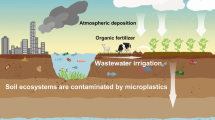Abstract
The polarity and magnitude of primary electric charges carried by basidiospores in the airborne state were investigated in living fungal fruiting bodies under natural forest conditions using a portable experimental device designed by the author. The operating principle was the falling of spores in the homogeneous horizontal electric field. The vertical and horizontal components of the trajectories of the spores were determined according to their deposition sites on electrodes (vertical metal plates). Altogether 33 samples of spores were examined for polarity, 10 of these samples (with 104–106 spores per sample) also were used to calculate the mean spore charge-to-mass quotient and the mean spore charge. The detection limits of spore charge-to-mass quotient varied in the range from (4.9±2.3)×10−5 to (1.36±0.33)×10−4 C kg−1. Basidiospores (subglobose, smooth, diameter of 4–6 μm) of the closely related (sibling) species Phellinus alni, P. nigricans, P. populicola and P. tremulae (Hymenochaetales, Basidiomycota) carried positive electrical charges that have mean values from 48 to 305 elementary charges. The intraspecies variation of the spore charge could depend on the natural variation in spore size.
Similar content being viewed by others
References
Money N.P., More g’s than the Space Shuttle: ballistospore discharge, Mycologia, 1998, 90, 547–558
Pringle A., Patek S.N., Fisher M., Stolze J., Money N.P., The captured launch of a ballistospore, Mycologia, 2005, 97, 866–871
Buller A.H.R., Researches on Fungi, Vol. 1, Longmans, London, 1909
Gregory P.H., Electrostatic charges on spores of fungi, Nature, 1957, 130, 330
Swinbank P., Taggart J., Hutchinson S.A., The measurement of electrostatic charges on spores of Merulius lacrymans (Wulf.) Fr., Ann Bot-London, 1964, 28, 239–249
Webster J., Procton M.C.F., Davey R.A., Measurement of the electrical charge on some basidiospores and an assessment of two possible mechanisms of ballistospore propulsion, T Brit Mycol Soc, 1988, 91, 193–203
Money N.P., Fischer M.W.F., Biomechanics of spore release in phytopathogens, In: Esser K. (Ed.), The Mycota, Vol. 5, A comprehensive treatise on fungi as experimental systems for basic and applied research, Desing H.B. (Ed.), Plant relationships, 2nd ed., Springer-Verlag, Berlin Heidelberg, 2009
Elbert W., Taylor P.E., Andreae M.O., Pöschl U., Contribution of fungi to primary biogenic aerosols in the atmosphere: wet and dry discharged spores, carbohydrates, and inorganic ions, Atmos. Chem. Phys., 2007, 7, 4569–4588
Sesartic A., Dallafior T.N., Global fungal spore emission, review and synthesis of literature data, Biogeosciences, 2011, 8, 1181–1192
Parmasto E., Development and spore discharge of the fruit-bodies of Polyporaceae, Eesti NSV Teaduste Akadeemia Toimetised, Bioloogia, 1958, 7, 83–93, (in Russian, with summary in English)
Tamm Ü., Aspen in Estonia, Eesti Loodusfoto, Tartu, 2000, (in Estonian, with summary in English)
Niemelä T., Polypores in Finnland and Estonia, Eesti Loodusfoto, Tartu, 2008, (in Estonian)
Deering R., Dong F., Rambo D., Money N.P., Airflow patterns around mushrooms and their relationship to spore dispersal, Mycologia, 2001, 93, 732–736
Arold I., Estonian landscapes, Tartu Ülikooli Kirjastus, Tartu, 2005, (in Estonian, with summary in English)
Sell I., Taxonomy of the species in the Phellinus igniarius group, Mycotaxon, 2008, 104, 337–347
Fuchs N.A., The mechanics of aerosol, Academy of Sciences of the USSR, Moscow, 1955, (in Russian)
Green H., Lane W., Particulate clouds: dusts, smokes and mists. Khimiya Press, Leningrad, 1972, (in Russian)
Seinfeld J.H., Pandis S.N., Atmospheric chemistry and physics: from air pollution to climate change, 2nd ed., John Wiley & Sons, 2006
Hopper V.D., Laby T.H., The electron charge, P Roy Soc London A, 1941, 178, 243–272
Savile D.B.O., Spore discharge in basidiomycetes: A unified theory, Science, 1965, 147, 165–166
Gregory P.H., Microbiology of the atmosphere, 2nd ed., John Wiley & Sons, New York and Toronto, 1973
Parmasto E., Parmasto I., Variation of basidiospores in the Hymenomycetes and its significance to their taxonomy, Biblioth. Mycol., 1987, 115, 1–168
McCartney H.A., BainBridge A., Legg B.J., Electric charge and the deposition of spores of barley mildew Erysiphe graminis, Atmos. Environ., 1982, 16, 1133–1143
Author information
Authors and Affiliations
Corresponding author
About this article
Cite this article
Saar, M. Investigation of the electrostatic charge of basidiospores of the Phellinus igniarius group. cent.eur.j.biol. 8, 410–422 (2013). https://doi.org/10.2478/s11535-013-0152-y
Received:
Accepted:
Published:
Issue Date:
DOI: https://doi.org/10.2478/s11535-013-0152-y




